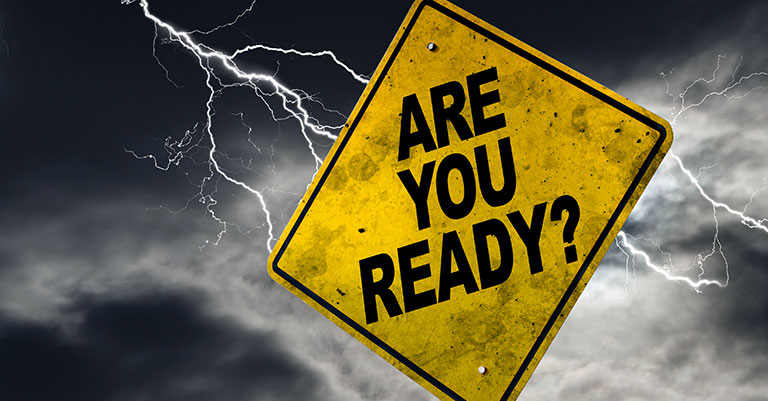If you or someone you love lives with complex medical conditions, you’re no stranger to planning. Managing medications, maintaining an appointment schedule with multiple physicians, and preparing for any out-of-home trip require significant forethought. Planning for an emergency situation is no different.
In the event of a disaster, the last thing you want to worry about is how to power your loved one’s medical equipment or ensure they have adequate prescriptions. We’ve put together some disaster preparation tips to help you plan for the unexpected.
Snap photos of your personal information and medical records
If you’re forced to relocate or seek emergency care in an unfamiliar facility, you’ll need all the information about your child’s complex medical history in one easy-to-access location. A simple way to gather your documents is to snap photos with your phone and save them in a dedicated folder. It’s also a good idea to print the photos and store them in a watertight container, in case you’re unable to access your mobile device when you need the information.
You never know exactly what identifying documents you’ll need, so don’t leave anything out. Personal records you might need include:
- Driver’s licenses
- Passports
- Social security cards
- Birth certificates
- Proof of custody, if applicable
- Bank account information
- Insurance cards
- Medical records from each physician
- Neuropsychological test results
Having a comprehensive list of your child’s prescription medications on hand can also be a lifesaver. Keep a running inventory of each prescription on your mobile device, including the drug name, diagnosis being treated, prescribing physician, physician’s phone number, and dosage. If your child is allergic to any medications, foods, or environmental stimuli, make note of these sensitivities, as well.
Maintain an emergency supply of prescriptions and medical equipment
It may seem simple, but this one is crucial. Depending on the disaster, you may be unable to access your pharmacy or prescribing physicians. With at least a two-week supply of prescription medications at your disposal, you’ll prevent gaps in treatment — and preserve your own peace of mind in the process. If your child requires specialty medical equipment, such as at-home ventilator supplies or diabetes management paraphernalia, make sure to keep an emergency stash on hand.
Anticipate your child’s emotional, as well as physical, needs
Disasters can be as challenging emotionally as they are physically. You can help your child stay calm and centered by surrounding them with comforting objects, such as stuffed animals, weighted blankets, and fidget toys. You can even involve them in the preparation process by asking which “lovie” they want to take with them in the event of an emergency. Engage their imagination by creating a story about the stuffed animal – perhaps they have protective powers. Even a brief conversation can help to prepare your child emotionally — and make disasters seem less scary when they do occur.
Distraction can also be extremely helpful, whether you’re at home, traveling to an evacuation destination, or waiting in an emergency care facility. Add a collection of games and activities to your emergency kit, such as books, magazines, Mad Libs, puzzles, playing cards, and travel-sized board games. Activities will help to counter boredom, relieve anxiety, and add a dose of fun to an otherwise stressful situation.
Set a reminder to update your go bag every six months
The needs of medically complex children are rarely static. Everything from prescription medications and physicians to behavioral challenges and personal interests regularly change. We recommend reviewing your go bag and personal documents at least every six months to ensure your supplies and information remain up-to-date. Mark your calendar or set a reminder in your phone to help you remember this maintenance step.
Print and laminate our disaster preparation checklist
There are so many little items to remember when preparing for a disaster — especially if your child has complex medical needs. Our comprehensive disaster preparation checklist simplifies the process. You can check off each item using the digital PDF, or even print and laminate this document for future reuse.

